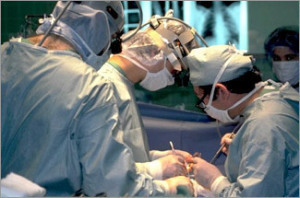Septic shock 10 times more common than heart attacks after surgery
by
Brendon Nafziger, DOTmed News Associate Editor | July 20, 2010

Septic shock can
cause organ failure. (Image couresty WHO.)
Bloodstream infections are vastly more common, and therefore more deadly, than heart attacks after general surgery, according to a new study.
Septic shock is a condition of dangerously low blood pressure from the body getting overwhelmed by bacteria. A new review of hundreds of thousands of general surgery cases found it is 10 times more common than heart attacks following general surgery, with nearly one-third of patients afflicted by septic shock dying from it within a month after the operation.
In a paper published in the July issue of Archives of Surgery, researchers found septic shock and sepsis each occurred in about one out of 50 surgeries, but heart attacks or pulmonary embolisms occurred in only about one out of every 500 surgeries.
Septic shock and heart attacks were equally deadly if they did occur, killing about one-third of patients stricken by them. Death rates were lower for sepsis, at about one out of 20, and for pulmonary embolism, at about one out of 10.
"[S]eptic shock occurs 10 times more frequently than myocardial infarction and has the same mortality rate; thus, it kills 10 times more people," wrote the authors, led by Dr. Laura J. Moore at The Methodist Hospital, Weill Cornell Medical College in Houston, Texas. "Therefore, our level of vigilance in identifying sepsis and septic shock needs to mimic, if not surpass, our vigilance for identifying myocardial infarction and pulmonary embolism."
In the study, the authors analyzed 363,897 general surgery patients. They found risk factors for the deadly blood infections included being older than 60, needing an emergency operation and having a co-occurring illness. Having another illness increased risk of dying 22-fold, according to the paper.
